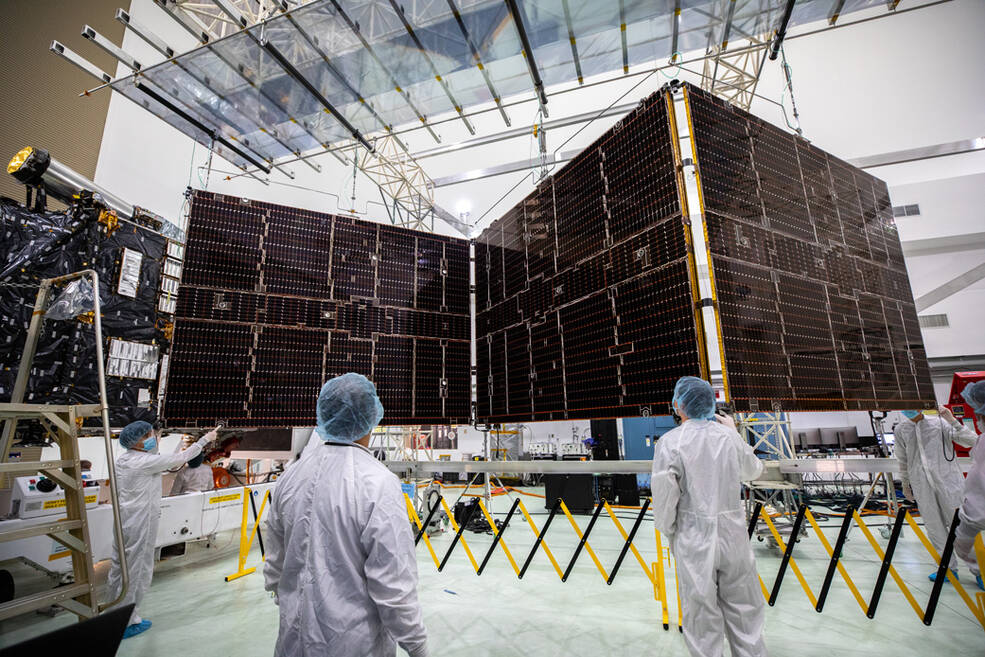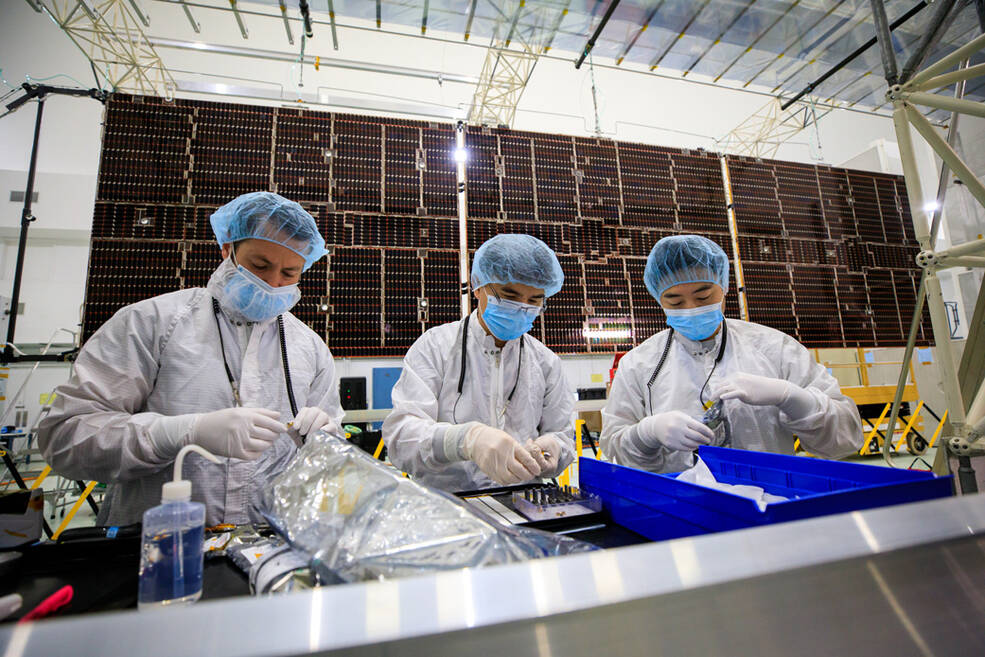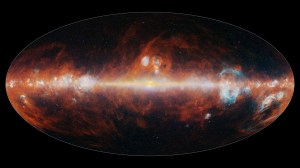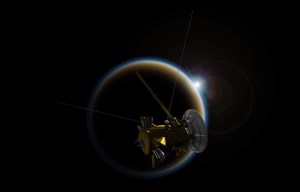EDITOR’S NOTE: Psyche’s launch date has been moved to October 2023 and its flight plan updated since this story was published. For more information, visit the Psyche press kit.
The Psyche mission is speeding toward its Oct. 5 launch date, preparing for the last of its launch-preparation milestones.
Robotically unfurling in a clean room near NASA’s Kennedy Space Center in Florida, the Psyche spacecraft’s jumbo solar arrays were tested and permanently installed on the orbiter in preparation for its 2.5 billion-mile (4 billion-kilometer) journey to study a metal-rich asteroid. The launch period opens Oct. 5.
After passing the deployment test, the twin wings were re-stowed and will remain tucked away on the sides of the orbiter until the spacecraft leaves Earth. Psyche is scheduled to reach its destination – a mysterious asteroid of the same name, in the main asteroid belt between Mars and Jupiter – in July 2029. Then the spacecraft will orbit the asteroid from various altitudes for 26 months to gather images and other data.
Scientists hope that learning about the asteroid, which may be part of a core of a planetesimal (a building block of a planet), will tell us more about planetary cores and Earth’s own formation.
This final installation of the solar arrays took place at Astrotech Space Operations, near Kennedy. The arrays were deployed during testing last year at NASA’s Jet Propulsion Laboratory in Southern California. At 800 square feet (75 square meters), the five-panel, cross-shaped solar arrays are the largest ever deployed at JPL. With the arrays unfurled in flight, the spacecraft will be about the size of a singles tennis court.
Although they will produce more than 20 kilowatts of power when the spacecraft is near Earth, the solar arrays are primarily designed to work in the low light of deep space. The asteroid Psyche is so far from the Sun that even these massive arrays will generate just over 2 kilowatts of power at that distance.
That’s only a little more power than a hair dryer uses but is ample energy to meet Psyche’s electrical needs, including running science instruments, telecommunications, equipment that controls the orbiter’s temperature, and the spacecraft’s superefficient solar electric propulsion engines. The system’s thrusters use electromagnetic fields to accelerate and push out charged atoms, or ions, of the neutral gas xenon. The expelled ions create the thrust that pushes Psyche through space and emit a blue glow.
This thrust is so gentle, it exerts about the same amount of pressure you’d feel holding the weight of one AA battery in your hand. But it’s enough to accelerate Psyche through deep space. With no atmospheric drag to hold it back, the spacecraft will accelerate to speeds of up to 124,000 mph (200,000 kph) relative to Earth during its interplanetary journey to the asteroid belt.
In mid-August, a crew is scheduled to begin loading all 2,392 pounds (1,085 kilograms) of xenon onto the spacecraft over the course of a couple weeks.
A SpaceX Falcon Heavy is targeted to launch Psyche from Launch Complex 39A at Kennedy Space Center no earlier than 10:38 a.m. EDT (7:38 a.m. PDT) on Oct. 5, with additional opportunities scheduled through Oct. 25.
Watch as technicians at the Astrotech Space Operations facility near NASA’s Kennedy Space Center in Florida deploy Psyche’s twin solar arrays – and permanently affix them to the spacecraft – one at a time. This timelapse video was shot over about eight days in late July.Credits: NASA/Glenn Benson and Cory Huston
More About the Mission
Arizona State University leads the Psyche mission. A division of Caltech in Pasadena, JPL is responsible for the mission’s overall management, system engineering, integration and test, and mission operations. Maxar Technologies in Palo Alto, California, provided the high-power solar electric propulsion spacecraft chassis.
JPL also is providing a technology demonstration instrument called Deep Space Optical Communications that will fly on Psyche in order to test high-data-rate laser communications that could be used by future NASA missions.
Psyche is the 14th mission selected as part of NASA’s Discovery Program, managed by the agency’s Marshall Space Flight Center in Huntsville, Alabama. NASA’s Launch Services Program, based at the Kennedy Space Center, is managing the launch service.
For more information about NASA’s Psyche mission go to:
and
Media Contacts
Gretchen McCartney
Jet Propulsion Laboratory, Pasadena, Calif.
818-393-6215
gretchen.p.mccartney@jpl.nasa.gov
Karen Fox / Alana Johnson
NASA Headquarters, Washington
301-286-6284 / 202-358-1501
karen.c.fox@nasa.gov / alana.r.johnson@nasa.gov
2023-108































